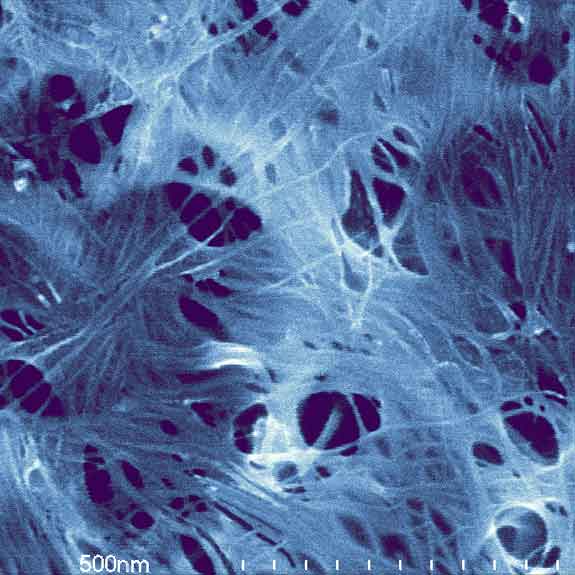Carbon Nanotubes Deposited Like Paper Fibers
Among their other qualities, single-wall carbon nanotubes (SWCNTs) have attracted much attention as tiny electrical conductors. Relatively small concentrations of nanotubes can change a normally insulating polymer film to a transparent electrical conductor.
Using samples of carbon nanotubes sorted by by length, materials scientists at the National Institute of Standards and Technology (NIST) have made some of the most precise measurements yet of the concentrations at which delicate mats of nanotubes become transparent, conducting sheets.
The "mat" pictured here was made by mixing nanotubes in water and draining the water away through nanoscale filters to leave behind this delicate nanotube structure.

Collaborating scientists include D. Simien, J.A. Fagan, W. Luo, J.F. Douglas, K. Migler and J. Obrzut.

Image credit: Chastek & Talbott/NIST
The nanotubes here have an average length 820 nm and make a continuous, electrically conducting network overall in spite of obvious gaps. On a macroscale this material would be nearly transparent. Color added for clarity.
